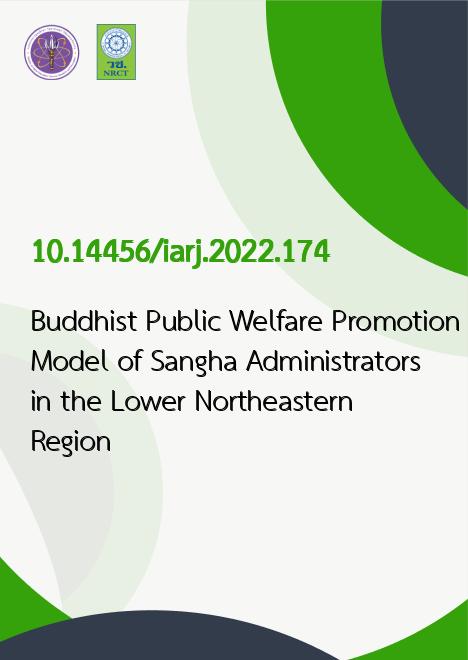
|
Buddhist Public Welfare Promotion Model of Sangha Administrators in the Lower Northeastern Region |
|---|---|
| รหัสดีโอไอ | |
| Creator | Phrakhrubaidikawichan Wisuttho |
| Title | Buddhist Public Welfare Promotion Model of Sangha Administrators in the Lower Northeastern Region |
| Contributor | Yupaporn Yupass, Saovalak Kosonkittiumporn |
| Publisher | DR.KEN Institute of Academic Development and Promotion |
| Publication Year | 2565 |
| Journal Title | Interdisciplinary Academic and Research Journal |
| Journal Vol. | 2 |
| Journal No. | 6 |
| Page no. | 733-752 |
| Keyword | Promotion, Public Welfare, Monks, Lower Northeastern Thailand |
| URL Website | https://so03.tci-thaijo.org/index.php/IARJ/about |
| Website title | https://so03.tci-thaijo.org/index.php/IARJ/article/view/265337 |
| ISSN | 2774-0374 |
| Abstract | From rural society to online society Still, the monks still have the same roles and duties, more or less depending on the changing factors in society. Including accepting the changes of each society, monks still have many roles and responsibilities in performing their duties because of the faith of the Buddhists. Therefore, the role of monks and helping people in the situation of Kovic-19 Therefore, it is very important to be involved in the lives of Buddhists, either directly or indirectly. Thus, this research was to (1) study the level of public aid promotion of Sangha administrators, (2) study factors affecting the public aid promotion of Sangha administrators, and (3) to establish and confirm the public welfare promotion model of the Sangha administrators. This research was held at the lower northeastern of Thailand. This research was divided into 3 phases: Phase 1 studied the level of public welfare promotion, and factors affecting public welfare promotion of monks by questionnaire 386 monks. The instrument was the 5-rating scale questionnaire. Data were analyzed by descriptive statistics, mean, percentage, standard deviation, and Structural Equation Model (SEM), Phase 2, establish a model for promoting public welfare of Sangha administrators by interviewing the target group 20 persons of experts were academicians, Sangha administrators from provincial, and district level. Phase 3, confirmation of model of public assistance promotion of Sangha administrators by the expert verification. The result found that (1) the public assistance promotion of the Sangha administrators as overall was at a high level, ranking each aspect were assistance, development, support, and integration respectively. (2) Factors affecting public welfare promotion of Sangha administrators as overall by statistical significant at 0.01 level were the personal competency, the external reinforcement, the Sangha Organization Competency which 3 factors can explain the variation in public aid promotion of monks at 48.30% (R2 = 0.483). The relationship of the model of public welfare promotion of the Sangha administrators is consistent with the empirical data, test, p-value = 0.002, x2/df = 1.630, GFI = 0.994, CFI = 0.992, RMSEA = 0.04, SRMR = 0.03. And (3) Buddhist public welfare promotion model of Sangha administrators were as follows: (A) development of personal competency, (B) development of external support, and (C) development of sangha organization competency. |